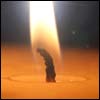You know how we’re always told to light Shabbat candles before sunset? Not the last minute before sunset, but at least 18 minutes before sunset.
When it comes to Chanukah candles, it’s the opposite way around. Wait until it’s dark.
Sure, you can light before sunset—if you won’t be able to light later. On Friday, for example, we light the Menorah before lighting Shabbat candles. But we use extra long candles or extra oil, so that those flames will keep burning for at least half an hour after sunset.
Because the real time for lighting the Menorah is when it’s dark outside, almost a half-hour after sunset—the opposite of Shabbat, when it is never permitted to light candles after sunset.
Why the difference?
Yet more puzzling: The Chanukah candles are meant to represent the Golden Menorah that shone in the Temple in Jerusalem. That menorah was lit an hour and a quarter before sunset. So why don’t we do the same on Chanukah?
And even stranger: The Temple Menorah, like the Shabbat candles, were lit indoors. The Chanukah light was originally lit outside the front door. Nowadays, most of us light it indoors—but we still try to place it where everyone outdoors will see.
So here’s an explanation that has many applications in life:
All these three kinds of light—the Temple Menorah, the Shabbat candles, and the Chanukah candles—are meant to illuminate a darkness that is not just the physical absence of light, but the spiritual absence of wisdom, kindness, empathy and goodness that results in a darkness of ignorance, suffering, cruelty, and evil.
There are two ways of dealing with that darkness. One is to create a place of light so bright and beautiful that all who seek light will be drawn inward. That’s the idea of the Shabbat candles and the Temple Menorah.
Then there’s the alternative: Go out into the dark and make it shine. Let it shine even to those who aren’t looking for it. To those who don’t know they’re missing it.
That’s the strategy of the Chanukah candles.
The first strategy is best when dealing with regular darkness. The Chanukah strategy is what you need when the darkness gets so vicious that people don’t even know they are in the dark. That’s when you’ve got to beat darkness on its own territory.
The first strategy will bring in those who are lost in the dark, but are looking for some light.
With the Chanukah strategy, you can grab those who take an active part in that darkness, turn them around, and enlist them to the side of light.
Now that’s the ultimate bearer of light—someone who takes everything he learned from the darkness and makes it shine bright. Very bright.
As it turns out, the Chanukah Menorah is the ultimate strategy for subverting darkness—just what we need today.








Start a Discussion